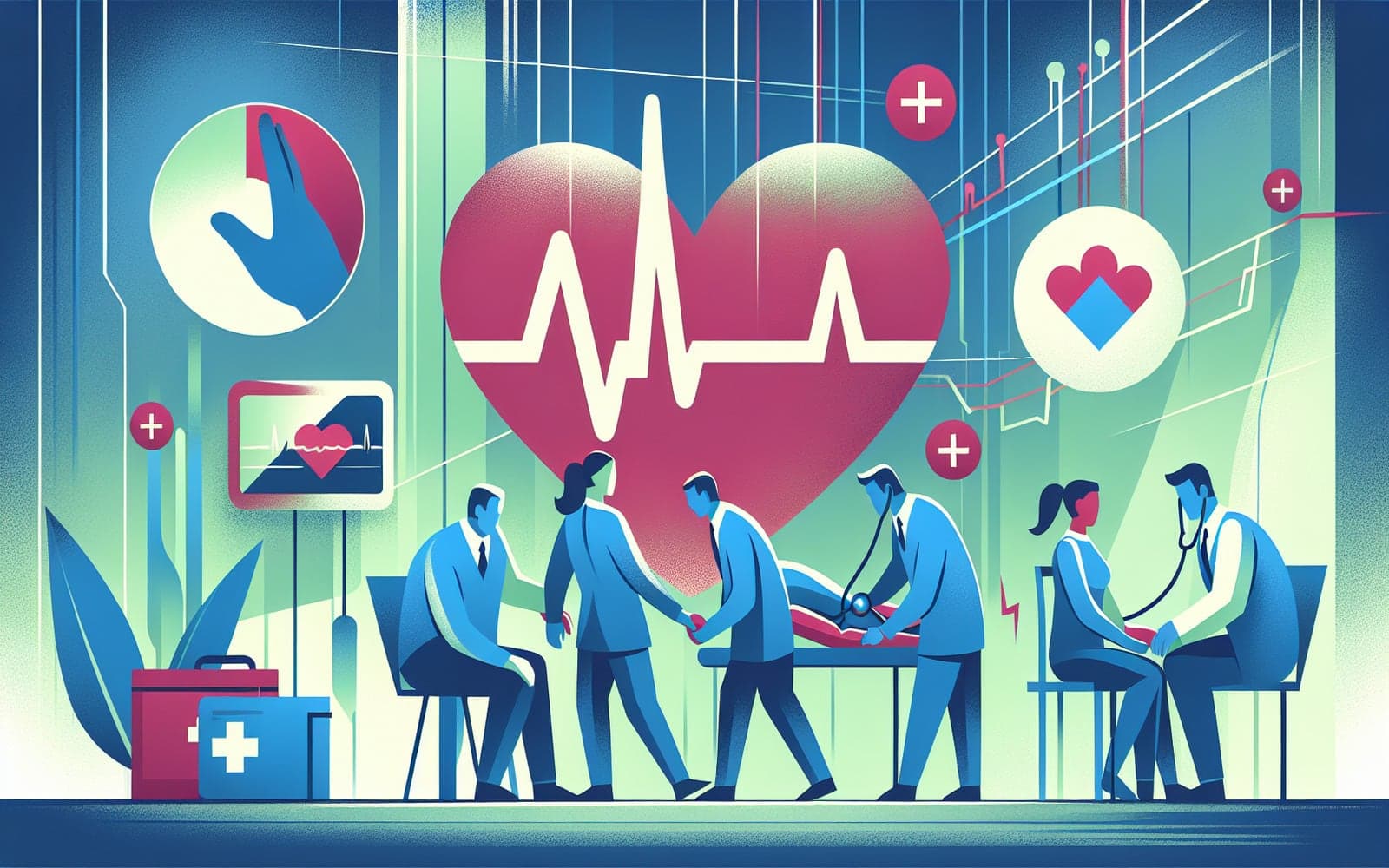Spotting the Signs: Recognizing Cardiac Arrest Symptoms
Published: Mar 19, 2024
Recognizing the symptoms of cardiac arrest quickly is crucial for effective intervention. This article helps you identify these critical signs to act fast in emergencies.
Contents
What is Cardiac Arrest?
Cardiac arrest occurs when the heart suddenly stops beating, disrupting blood flow to the brain and other organs. Without immediate treatment, it can lead to death within minutes.
Key Symptoms to Watch For
Symptoms of cardiac arrest include sudden collapse, loss of consciousness, and absence of pulse. These signs require immediate medical attention and intervention.

Importance of Quick Response
A fast response to cardiac arrest is vital. Immediate CPR and defibrillation can increase survival chances significantly, making it imperative to act quickly when symptoms appear.
Frequently Asked Questions
The heart stops beating, disrupting blood flow to vital organs.
Symptoms include sudden collapse, loss of consciousness, and no pulse.
Quick CPR and defibrillation can significantly improve survival chances.
Key Takeaways
Recognizing cardiac arrest symptoms quickly can make all the difference in saving a life.
Discuss cardiac arrest symptoms and responses with Doctronic to be prepared.Related Articles
References
Highlights of the History of Cardiopulmonary Resuscitation (CPR). American Heart Association 2006.
Hassager C, Nagao K, Hildick-Smith D. Out-of-hospital cardiac arrest: in-hospital intervention strategies. Lancet 2018; 391:989.
Always discuss health information with your healthcare provider.

